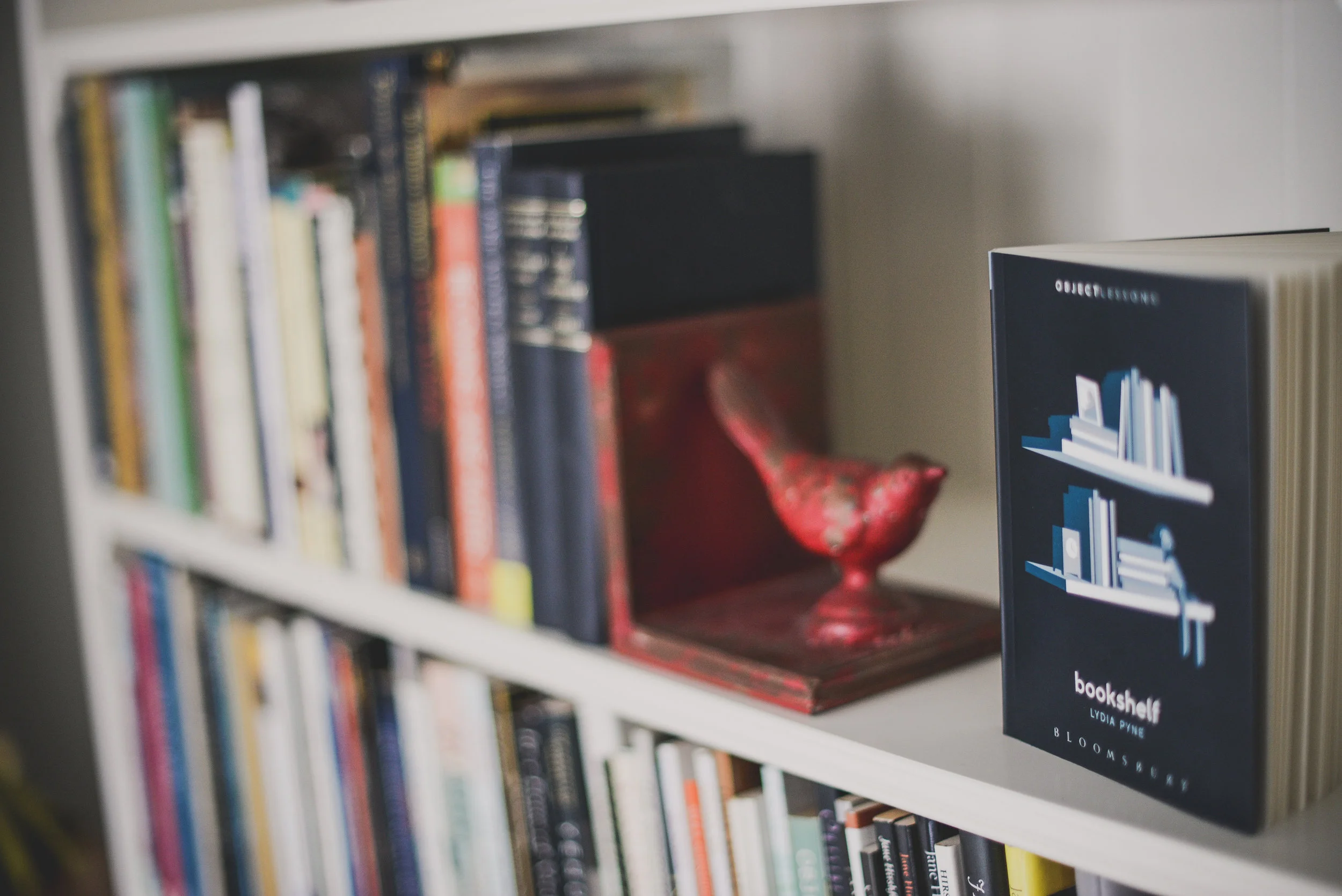Turning My Desk Around
I love my study. It's my happy place. We talk about moving fairly frequently, but for me only half-heartedly, because I have my perfect room of one's own. Quite a while ago now, we repainted the room and I got new bookshelves from Ikea. The fancy kind, not just the classic Billy bookshelf. We changed up the art. I donated a lot of my books to the library. And, not long after, I decided to, wait for it, turn my desk around. It has always faced the window in the 18 years that we've lived here. The plan has always been to have a tree growing, strategically placed, and that would be my view. We even planted a couple, but neither of them took. Which is weird because otherwise everything seems to grow in our yard.
So after we'd changed up the room, one day, I just had the idea that it would be good to have my nice new bookshelves as my view, rather than the big wall of our neighbour's house with taupe vinyl siding on it. I haven't looked back. Well, sometimes I do look over my shoulder, but you know what I mean.
Not long after I turned my desk around, I was flipping through a favourite book of poetry, My Poems Won't Change the World by Patrizia Cavalli, and came across a poem that I must have read and internalized. Here it is:
If I turn my desk around
my thoughts will take a different tack;
the path to the sofa will be slower.
Before when I was stuck
I'd go to sleep without warning.
I'd plunge into the cushions and my thoughts,
dreaming themselves free, would graze
here and there among countless blades of grass.
– Patrizia Cavalli
The path to my couch is now slower. And maybe staring at a wall of books is the best kind of motivation for a writer anyway.
I recently picked up one of the books in the Bloomsbury series, Object Lessons. The series is “a book series about the hidden lives of ordinary things.” Bookshelf by Lydia Pyne is very readable, and begins with a possibly apocryphal quotation by Cicero who said, “A room without books is a body without a soul.”
This volume in the series is a short history of the bookshelf, taking us from the chained books of Medieval libraries, to the Ikea Billy bookshelf, to ebook shelves. There's an interesting chapter on the bookshelves of the New York Public Library which “trace their evolutionary roots to the mid-nineteenth century, to a small industrial steel company out of Louisville, Kentucky.” One begins to see library bookshelves as the skeleton of a library and it's interesting to trace their evolution, too.
A pleasant, one-sitting read, Bookshelf got me thinking about the bookshelves in my life. As someone who works part-time in a library, I probably think about them more often than many people. And as someone who often photographs books, the colour of bookshelves matters to me. After years of faux wood shelves, it's rather a delight to have white ones in my own study, where the colours of the books predominate.
Most of the books in our house are piled high on our bedside tables, or reside in my study, or in Rob's studio, not immediately evident to visitors, I suppose. In the “old days” it was a bit of a thing to eye up the bookshelves when visiting someone's house, and formulate an idea of their character by reading their shelves, so to speak. This hardly works in the age of ebooks, though, does it? And I won't even mention the so-called trend of displaying one's books spine in.
How do you store your books? What is your ideal bookshelf? Do you sort by colour (a trend from days gone by), or subject? Does anyone alphabetize by author? Share your thoughts in a comment. I would love to know!
Just a quick reminder that there is a “support” button below for anyone who might like to help fuel this blog, which is as you know a labour of love.....And a huge thanks to my recent supporters. Your donations mean a great deal to me.










